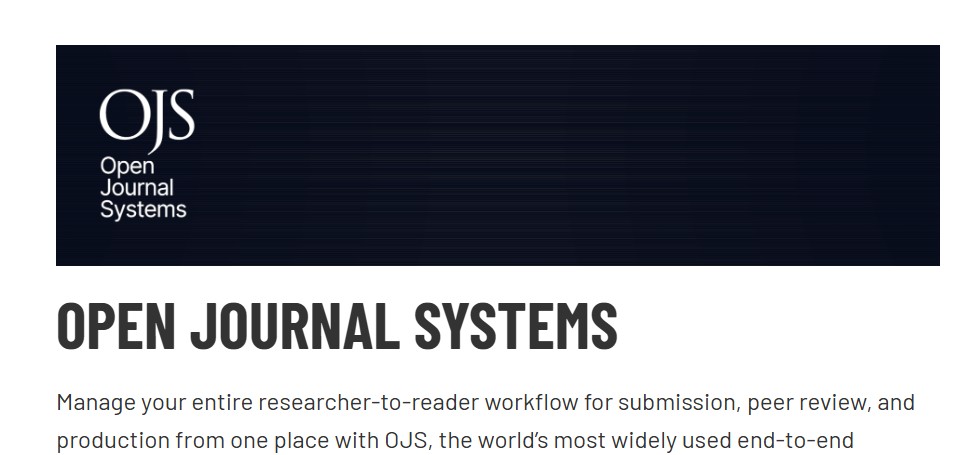To start a journal, you need to follow a structured process, which includes planning, setting up the journal website, and managing editorial workflows. Below is a detailed step-by-step guide based on the document you provided:
Step 1: Plan Your Journal
Before starting the technical setup, you need to define the core aspects of your journal.
1.1 Choose a Journal Title
- Select a unique and relevant title that reflects your journal’s focus area.
- Check if the title is already in use via ISSN Portal.
- Ensure the domain name is available for your journal website.
1.2 Define the Scope & Aims
- Clearly outline the journal’s subject area and research focus.
- Determine the type of articles you will publish (original research, review articles, case studies, etc.).
- Identify the target audience (academics, researchers, industry professionals, etc.).
1.3 Form an Editorial Board
- Recruit at least 7 members (academicians, researchers, or industry experts).
- Appoint an Editor-in-Chief and Editorial Board members.
- Ensure at least two international members for wider credibility.
- Editorial members should have official institute email IDs (e.g.,
name@university.edu).
1.4 Establish Journal Policies
You need to create policies that govern journal operations:
- Privacy Policy – Handling user data securely.
- Terms of Service – Rules for using the journal platform.
- Content Submission Guidelines –
- Submission process
- Manuscript formatting
- Peer review guidelines
- Copyright & licensing policies
- Ethical Guidelines – Research integrity, plagiarism policy.
- Open Access Policy – If applicable.
- Refund & Subscription Policies – If the journal has paid services.
- Accessibility Policy – Ensuring website usability for all users.
- Security Policy – Protecting journal data and preventing cyber threats.
Step 2: Set Up the Journal Website
2.1 Register a Domain Name
- Purchase a suitable domain (e.g., from GoDaddy or BigRock).
- If managing multiple journals, consider a broader domain-like
www.ajjournals.org. - Buy both .org and .com domains to prevent duplication or fraud.
2.2 Choose Hosting & Software
Since you are using Open Journal Systems (OJS), you can host your journal through OJSCloud.
OJSCloud Hosting Plan:
- Starter Hosting Plan – ₹11,900/year
- Website Setup with Provided Content – ₹15,890 (one-time)
- Total (including GST @18%) – ₹32,792
2.3 Journal Website Development by OJSCloud
After you provide all the required details, OJSCloud will:
- Develop the journal website (takes around 14 working days).
- Provide a review version for checking.
- Let you verify the content and request any corrections.
- Make the journal live by connecting your domain to hosting.
- Provide admin panel access to manage submissions, peer review, and publishing.
Step 3: Obtain ISSN (International Standard Serial Number)
- An e-ISSN is required for online journals.
- OJSCloud offers ISSN Consultancy Services to guide you through the application process.
- The ISSN agency requires:
- Editorial board details
- At least 6 research articles in the first issue
- A functional journal website
- Consistent publication schedule
Step 4: Implement Peer Review & Publishing Workflow
4.1 Configure the Editorial Workflow in OJS
- Submission System: Authors submit their papers via the OJS journal portal.
- Review Process: Editors assign papers to reviewers.
- Revisions & Acceptance: Authors make changes based on reviewer feedback.
- Final Publication: Approved articles are published in an issue.
4.2 Assign Digital Object Identifiers (DOIs) (Optional)
- Crossref DOI Services ensure article identification and citation tracking.
- OJSCloud can help obtain a DOI prefix and configure DOI plugins for article registration.
4.3 Set Up Plagiarism Check (Optional)
- Journals can integrate Crossref Similarity Check (iThenticate by Turnitin) to check for plagiarism.
Step 5: Launch & Promote Your Journal
Once your journal website is live:
- Announce the launch via email and social media.
- Invite researchers to submit papers.
- Index the journal in databases like Google Scholar, Scopus, and DOAJ (OJSCloud offers indexing consultancy).
- Regularly publish issues to maintain credibility.
Additional Services from OJSCloud - A Leading OJS Service Provider
OJSCloud offers various add-on services to enhance your journal:
- Cloudflare Security Solution – Protects against malware & DDoS attacks.
- Custom OJS Themes – Enhances journal website design.
- Crossref DOI Services – Provides DOI registration.
- Volume-Issue Organizer Plugin – Organizes published issues.
- Article View/Download Counter – Tracks article popularity.
- Author Certificate Generator – Automatically generates author certificates.
- Annual Maintenance & Support – 24/7 website maintenance & security.
- Back Office Journal Management – Manages article submissions, plagiarism checks, and DOI assignments.
- Indexing Consultancy – Helps list the journal in major research databases.
To start a journal, you need to:
- Plan: Choose a title, scope, and editorial board.
- Register a Domain: Secure a website name for your journal.
- Set Up the Website: Use OJSCloud hosting & OJS software.
- Develop Editorial Policies: Define peer review & publication rules.
- Obtain an ISSN: Apply for an e-ISSN for your journal.
- Implement Peer Review & DOI: Manage article submissions, assign reviewers, and register DOIs.
- Launch & Promote: Publish articles and attract submissions.
- Maintain & Upgrade: Opt for security, indexing, and back-office management services.
Total Cost (Basic Setup with OJSCloud)
- ₹32,792 (Including GST, One Journal with Hosting)
- Optional add-ons are available for additional features.
For further assistance, contact inquiry@ojscloud.com or visit OJSCloud.







